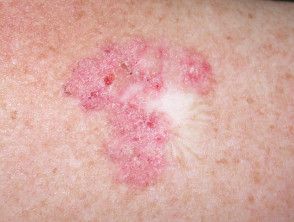- General Dermatology
- Eczema
- Alopecia
- Aesthetics
- Vitiligo
- COVID-19
- Actinic Keratosis
- Precision Medicine and Biologics
- Rare Disease
- Wound Care
- Rosacea
- Psoriasis
- Psoriatic Arthritis
- Atopic Dermatitis
- Melasma
- NP and PA
- Skin Cancer
- Hidradenitis Suppurativa
- Drug Watch
- Pigmentary Disorders
- Acne
- Pediatric Dermatology
- Practice Management
Combination Techniques With Photodynamic Therapy Show Promise in Treatment of Pigmented Basal Cell Carcinomas
A review examined the treatment landscape of BCC, particularly in the realm of photodynamic therapy.
While surgery remains a topline treatment for invasive basal cell carcinomas (BCC), non-invasive subtypes have prompted the use of alternative treatments, including cryotherapy, curettage, electrodesiccation, topical drugs, and photodynamic therapy (PDT).
Investigators Mazur et al conducted a literature review of PDT, a non-invasive light-activated treatment, in the management and treatment of BCCs. The review, published in Biomedicines, sought to explore the various uses of PDT in pigmented BCC lesions, specifically.
The pigmented subtype of BCC poses challenges due to the skin's light-absorbing and scattering properties, influenced by factors such as tumor depth, pigmentation degree, and skin phototype, review authors noted.
The review also assessed PDT's effectiveness in treating pigmented BCC, considering factors like tumor depth, degree of pigmentation, and prior debulking or curettage.
Using databases such as PubMed (MEDLINE) and Scopus, investigators searched for relevant literature. Key search terms included photodynamic therapy, PDT, basal cell, BCC, melanin, and pigment. An initial search included 482 studies, papers, and reviews; after excluding literature based on a lack of relevance, reviewers were left with a total of 9 studies included in the final review.
Studies revealed varying response rates, with some indicating lower efficacy in pigmented lesions. Combination approaches, such as debulking or curettage before PDT, demonstrated promising results, including more frequent complete treatment responses versus partial or no response in treatments where debulking or curettage were not additionally employed.
Studies by Kaviani, Ramirez, Lin, Souza, Itoh, Garcia-Cazana, Pereyra-Rodriguez, Salvio, and Sung presented diverse strategies. Debulking or curettage before PDT showed improved responses, suggesting a potential solution to the challenges posed by pigmented BCC.
Mazur et al noted that challenges related to pigmented BCC may include age-dependent decline in photosensitizer effectiveness and variations in PDT response. Ongoing research explores new compounds and innovative methods to enhance PDT outcomes, especially for deeper lesions and heavily pigmented areas, they said.
"A combination of tumor debulking by either electro-curettage, standard scalpel removal, or laser ablation, increases the success rates of ongoing [pigmented] BCC therapy," review authors wrote. "There is a need for better-quality studies regarding the use of PDT in [pigmented] BCCs. ...The development and use of new PS that specifically target pBCC cells, together with studies regarding patient-specific treatment resistance factors, should be prompted."
Reference
Mazur E, Kwiatkowska D, Reich A. Photodynamic Therapy in Pigmented Basal Cell Carcinoma-A Review. Biomedicines. 2023;11(11):3099. Published 2023 Nov 20. doi:10.3390/biomedicines11113099

